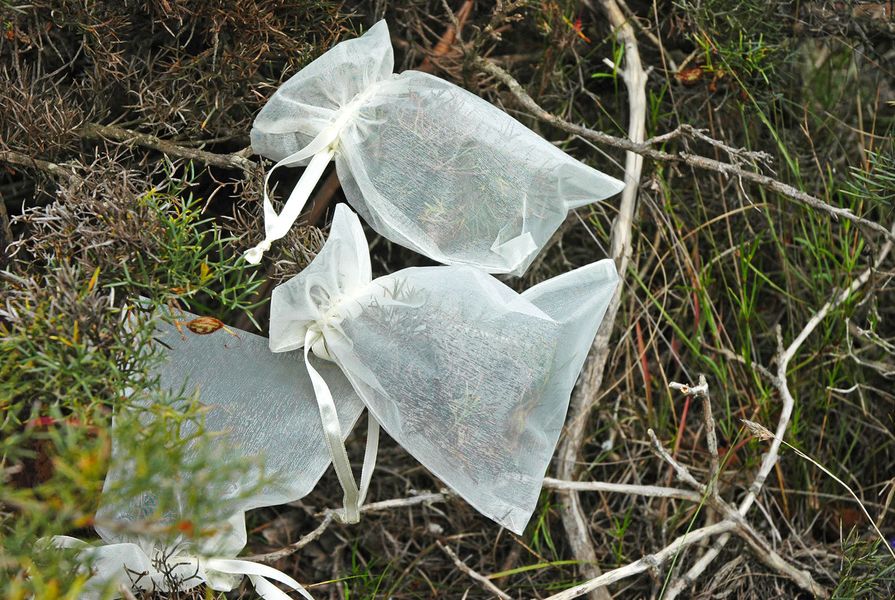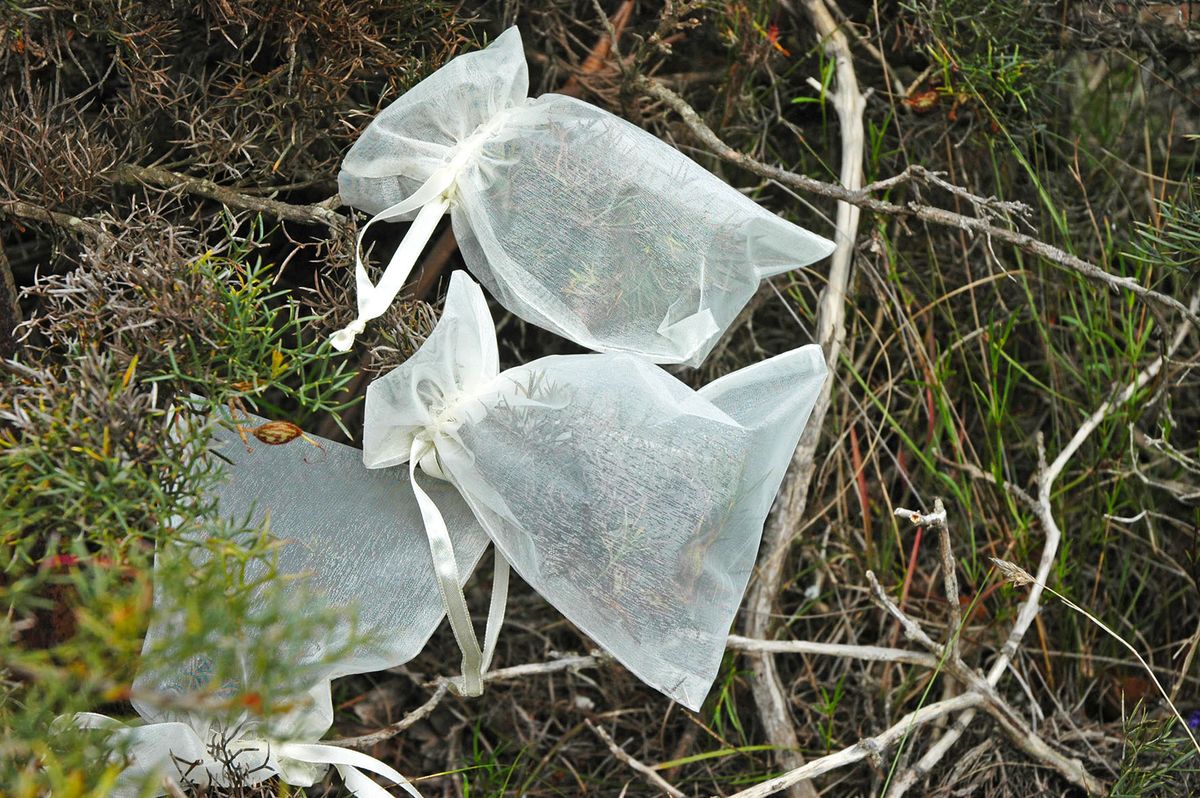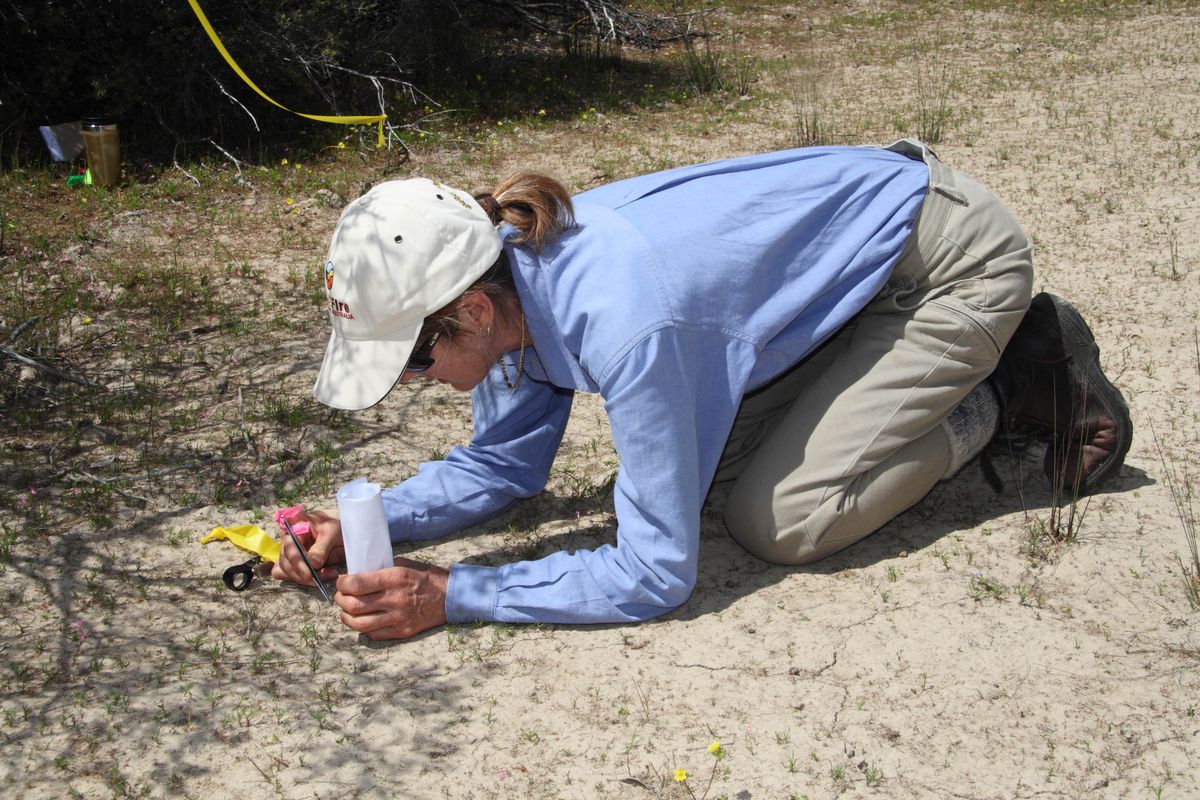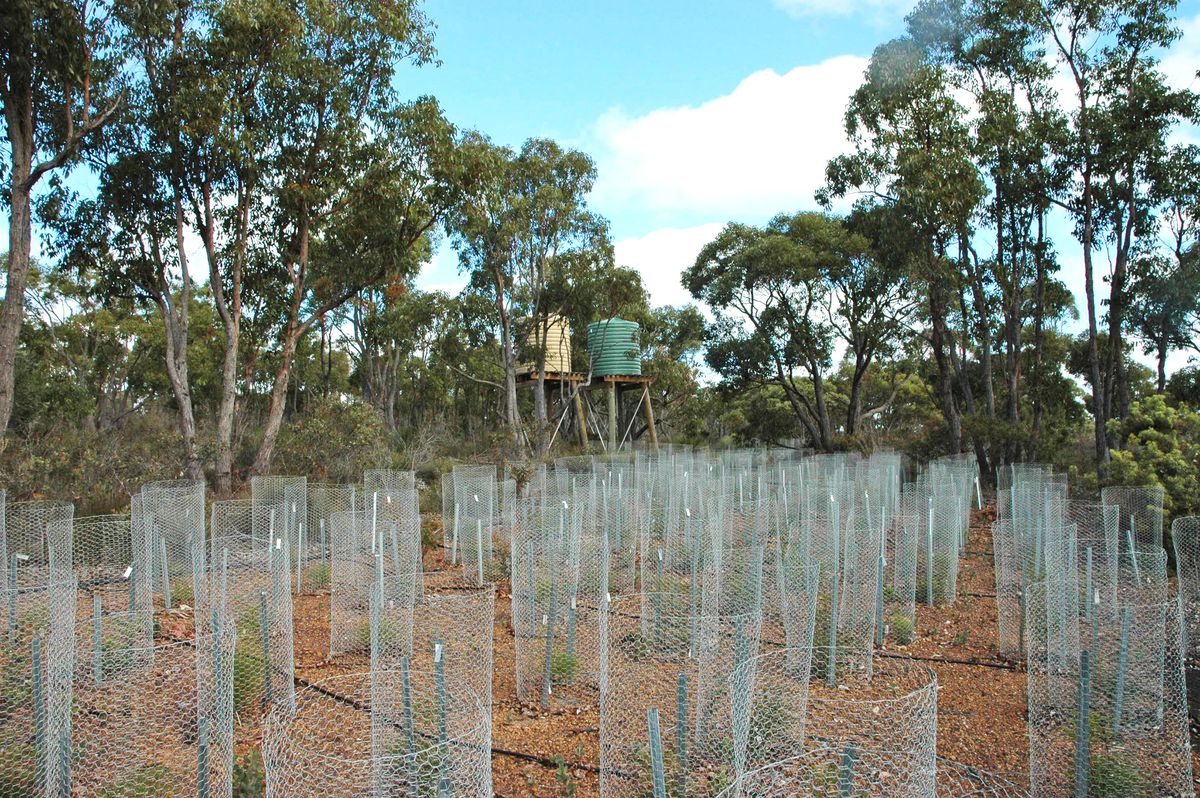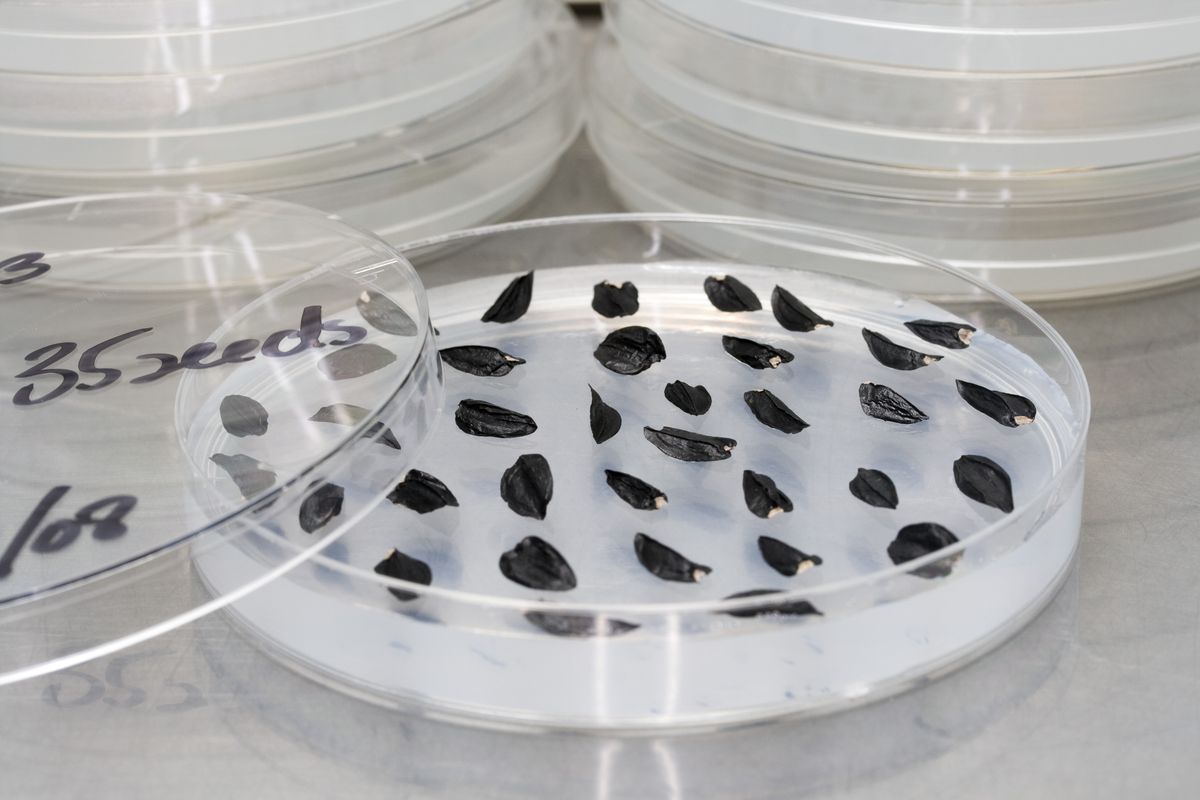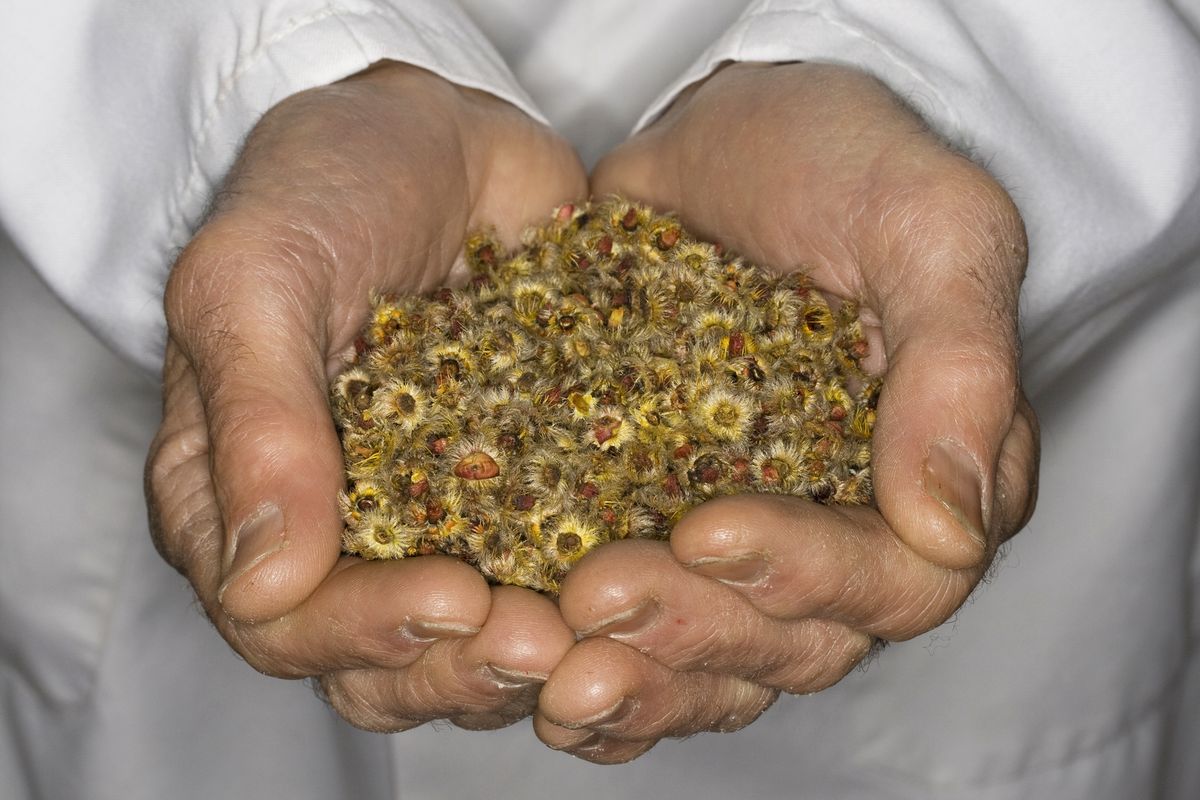Seeds provide half the calories consumed by people today, and they have also helped humans to evolve. In essence, the seeds of annual cereals such as rice, wheat and maize underpinned the rise of civilisation. Once people realised they could control their food supply by farming, human societies began to settle and grow. Over subsequent millennia, farmers retained seeds from plants with higher yield and more pleasant taste, and the art of domestication and reeding commenced. Seed banks have a significant role in safeguarding the conservation of plant genetic diversity on which our food security rests. This article describes some of the activities of the Australian Seed Bank Partnership.
Modern crop species are the result of sophisticated programs of breeding and genetic improvement designed to meet the needs of large-scale agriculture. Many of these crop species are now sown as monocultures and as such are at risk of succumbing to stresses such as changing climates and pests or diseases. Resilience is stronger when there is a diversity of plants rather than a monoculture. The old ‘landraces’ (traditionally or locally adapted) and wild varieties of these new cultivars are therefore vitally important as they represent the genetic diversity necessary to develop new resistant cultivars, helping to provide resilience to emerging risks. Saving seeds is even more important now than it was generations ago. The world’s population is forecast to rise to close to 10 billion by 2050, our farming land and our natural environments are under intense pressure, and the climate of the world is changing. Consequently, conserving seeds in banks is crucial to our future wellbeing.
Historical perspective
One of the first true ‘seed banks’ was set up in 1926 in St Petersburg, Russia, by botanist and geneticist Nikolai Vavilov. In principle, seed banking is straightforward and relies on the seeds of most (about 90%) seed-bearing plant species surviving air-drying and then freezing, which extends the longevity of these so-called ‘orthodox’ seeds in predictable ways. Since the 1960s, government agencies, international organisations, NGOs, and private philanthropies have invested heavily in the creation of seed banks. For example, halfway between the mainland of Norway and the North Pole, the Svalbard Global Seed Vault holds the world’s largest collection of crop diversity. Deep in the permafrost – although a changing climate affects even permafrost – seeds from the crop species from around the globe are stored as the ultimate insurance policy for the world’s food supply. Also in the northern hemisphere, the Millennium Seed Bank at the Royal Botanic Gardens Kew (Wakehurst Place) holds the largest and most diverse wild plant species genetic resource in the world, mostly seed contributed by a global network of seed banks. These collections serve as permanent repositories for the world’s vast genetic diversity in food crops and, increasingly, its diversity in wild plants.
Australia’s contribution to seed banking
The Australian Seed Bank Partnership is an alliance of 12 organisations, bringing together expertise from Australia’s leading botanic gardens, state environment agencies and NGOs governed by the Council of Heads of Australian Botanic Gardens. Members focus their work on securing Australian wild plant species in off-site seed collections, and at the same time enhance knowledge of native seed biology through research. This knowledge helps to improve conservation and restoration outcomes for the Australian flora. Building seed collections provides a resource for future use and an insurance policy for the nation’s native plants against threats such as land clearing, salinity and weed invasion and diseases such as myrtle rust and cinnamon fungus, which also affect garden plants.
The seed banks of the Australian Seed Bank Partnership are an important national resource for the conservation of Australia’s native plant species, in particular those that are rare, threatened and poorly known. The research and collection outcomes are shared through an online database, the Atlas of Living Australia. One of the partnership’s collaborators is the Australian Grains Genebank; under its Australian Crop Wild Relatives project, members will collect and improve the current stores of indigenous crop wild varieties, and enhance collections of endemic plant species.
The Australian seed partnership grew from individual seed bank involvement in the Millennium Seed Bank Project. Between 2000 and 2010, through this global seed conservation partnership, Australia conserved seed from more than 8000 of our native species, predominantly those species considered at risk of extinction. This effort by the Australian seed bank partners contributed to the Millennium Seed Bank Project’s success in having 10% of the world’s dryland flora in ex situ collections by 2010. The challenge now is to conserve an additional 15% of the world’s flora by 2020. Australian seed banks are contributing to this goal through the Australian Seed Bank Partnership’s 1000 Species Project.
Capturing and curating genetic diversity
Seed collection is not just about grabbing a handful of seed from the most bountiful plant. It is about trying to represent the diversity of the population or species. Small amounts of seed from many plants is much better than lots of seed from a few plants.
When collection of seed by hand picking proves difficult, seed bags are used to make sure sufficient seed can be collected for the intended purpose. These muslin bags let light and moisture pass through, and are placed around developing fruits allowing the maturation process to continue unhindered.
Collecting is only one aspect of the seed conservation process. The collections need to be curated to a high standard to ensure seed longevity is not compromised. Seeds are processed and quantified before testing and storage.
In many cases, seeds are easily extracted from their fruits; but some require just that little more work, for example the woody fruits of Banksia require heating for seed release.
Seed collection quality has an impact on the usability of the seed resource and so seeds are tested for their viability, mainly by germinating samples, although X-ray machines and destructive chemical tests can also be used to assess viability.
Preserved for posterity
Once seeds are cleaned and quantified they can be dried and frozen. But not all seed can be stored at sub-zero temperatures and alternative means of storage may be required.
Drying seed at temperatures of around 15–20º C and at low humidity (~15% relative humidity) is a benign way to reduce seed water content before freezing. Drying of seed is necessary to prevent crystallisation of free water in the cells, and increases seed longevity in storage.
The collections are an insurance policy, but most importantly they provide a resource for the reintroduction and restoration of declining species. Many partners of the Australian Seed Bank Partnership are active in reintroducing threatened species back into the wild.
Scientific research
Many Australian Seed Bank Partnership members conduct scientific research into their collections to gain insight into the biology and ecology of the species targeted for collection. This kind of research also contributes to getting more native plant species into horticulture and available for the home gardener. Much of the research revolves around the need to be able to re-establish the species back into the wild, either through reintroduction or restoration.
This article was originally published in Australian Garden History, volume 29 no 1, July 2017.

